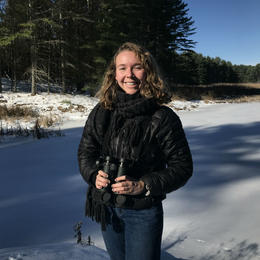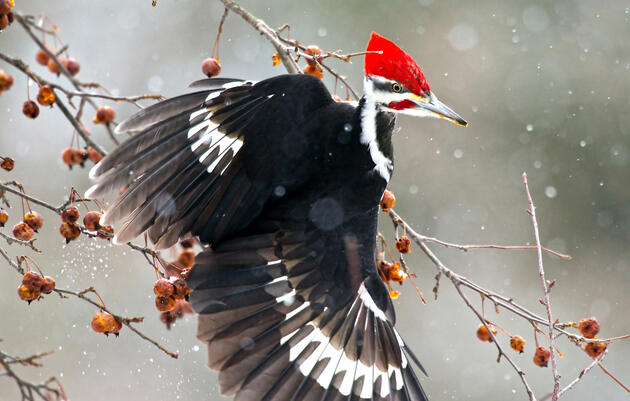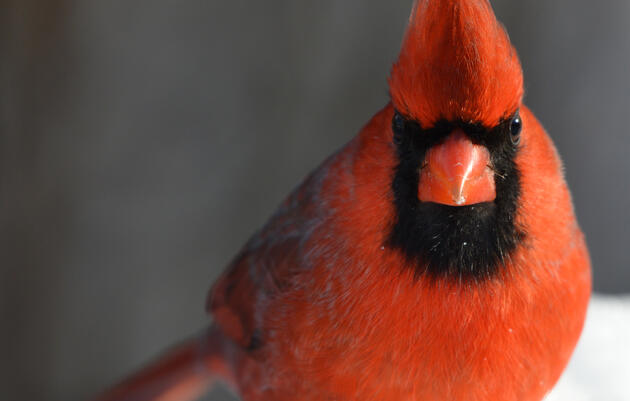On Tuesday we talked about woodpeckers that you may encounter in Vermont this winter and their adaptations. Today, we are going to learn about a group of cavity nesting birds that not only depend on woodpeckers for their shelter, but travel with Downy and Hairy woodpeckers throughout the winter in a mixed-species flock. We'll refer to this flock as the 'Chickadee Crew' because they make up most of the flock. The rest of the crew is made up of Downy and Hairy woodpeckers, Tufted Titmice, White-breasted Nuthatches and occasionally, Red-breasted Nuthatches.
Why do different species of birds 'flock together' in winter? It gives them an advantage. Being in a bigger group of birds is thought to help confuse or distract predators from singling out prey. Moreover, more birds means more foraging and communicating about food sources to fuel them through the winter. However, having many foragers can be a disadvantage as it can lead to competition. Lastly, and perhaps the most heartwarming advantage, if they travel in groups they can huddle for warmth in frigid temperatures.
What do these birds eat in winter? Seeds, berries and suet. Often times, you'll see one of these birds visit a black sunflower seed feeder, grab a single seed and fly away. Maybe they even come back a few times and do this. The Chickadee crew is full of sneaky eaters who bring their food back to a cache they've created under some bark or in a tree cavity somewhere about 130 feet away from your feeder.
Where does the 'Chickadee' crew live in the winter? Unlike many songbirds that build cup nests fastened to branches, grass or human-made structures, Chickadees, Tufted-Titmice and White-breaded Nuthatches are cavity nesters. This means they live in natural tree cavities or those that have been excavated by a woodpecker. The Red-breasted Nuthatch puts much more effort into their cavity nest and excavate them themselves.
How do Nuthatches 'walk' down trees? Nuthatches are famous for being upsidedown. As they move down the trunk of a tree they are only hanging on by their backward facing toe, called the halux.
White-breasted Nuthatch foraging along tree trunk.
Black-capped Chickadee
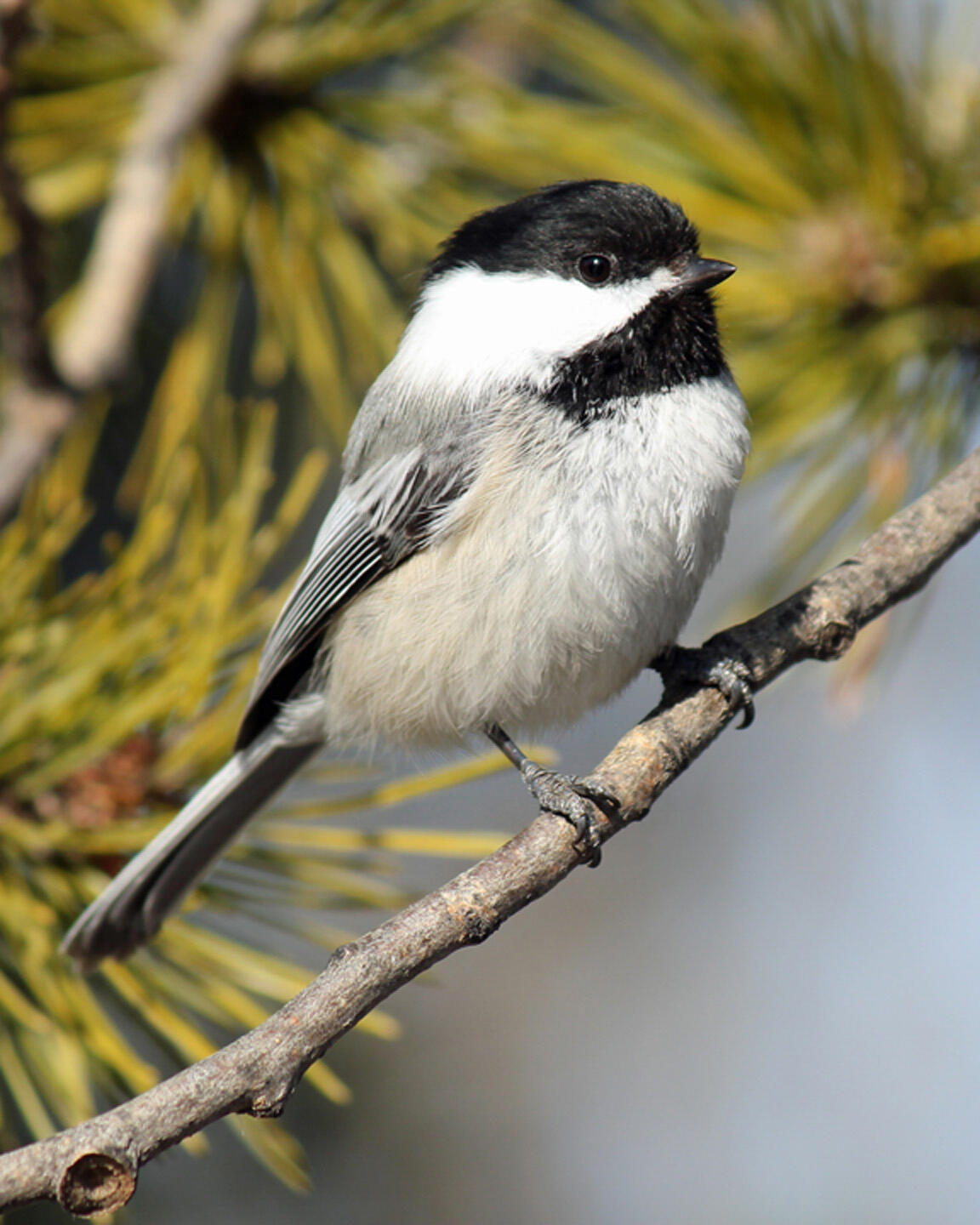
Perhaps our cutest year-round avian resident with their oversized heads and compact body, the Chickadee is distinct for it's black cap and bib, white cheeks, short bill, gray backside and a whiteish belly. They can be found in almost any area with trees or feeders and are usually one of the first birds people become familiar with. Unlike the other birds in this winter flock, Chickadees travel in a flock all year.
Chickadees sound like they are calling their own names to communicate, often times ending with multiple 'dees.' When Chickadees are in distress or want to give warning they add more 'dees' onto the end of their call. As you approach a flock of Chickadees, see if you notice the number of 'dees' in their call increase.
Don't be fooled by how adorable the Chickadee is! They have some impressive adaptations that allow them to survive the winter. As we mentioned, staying in a flock helps them forage for food and avoid predators, but Chickadees are also enter regulated hypothermia that allows them to lower its body temperature, in a controlled manner, to around 12 -15 degrees below its normal daytime temperature of 108 degrees F. This allows the bird to conserve almost 25 percent of its hourly metabolic expenditure when the outside temperature is at freezing!!!
Tufted Titmice
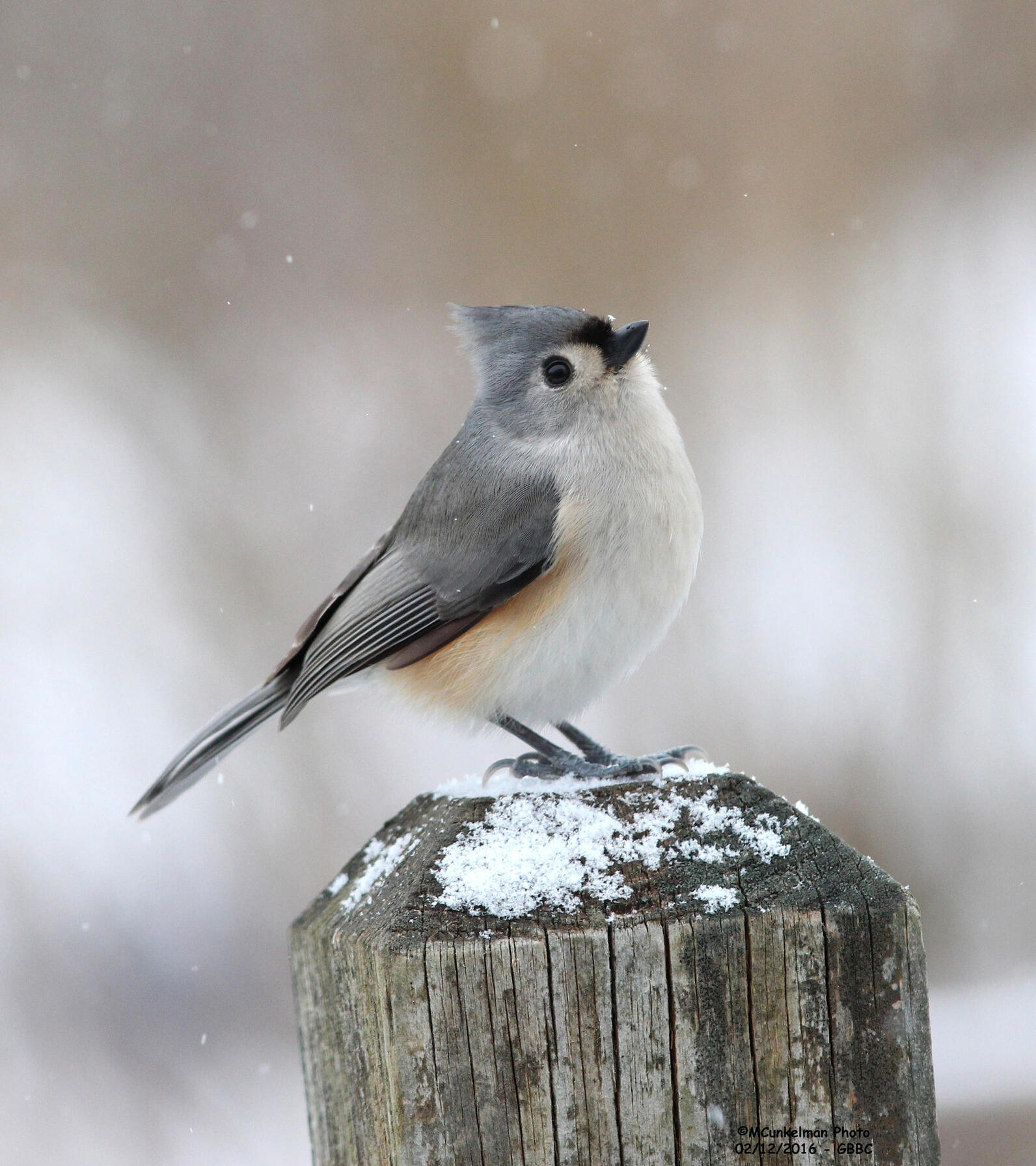
Tufted Titmice are smalle songbirds related to Chickadees, but behave quite differently. Tufted Titmice have large, black eyes, a gray back, white belly and a swooping gray crest atop their heads. Mating pairs join the mixed-breed flock and once winter is over they separate and spend the rest of the year in their pair. They can be heard whistling a high pitched peter-peter-peter call.
Fun fact: the Tufted Titmouse enjoys big seeds, like acorns, by holding the seeds between its feet while it hammers its bill into them until the split open.
White-breasted Nuthatch
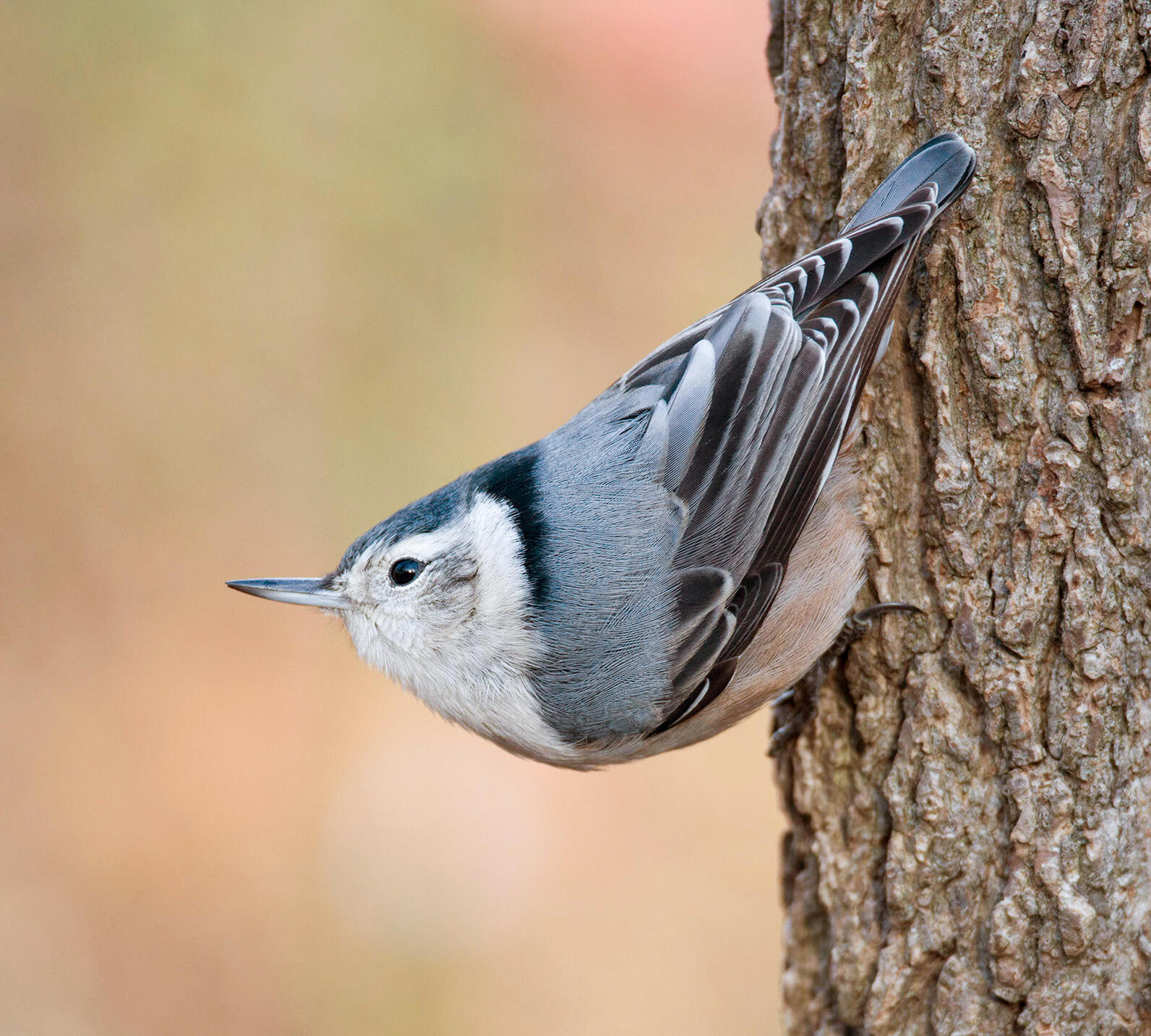
The White-breasted Nuthatch is one of my favorite birds. White-breasted Nutchatches are small birds that appear to have no neck, a bluish-gray back, a white belly with rusty spots near the feet and white cheeks. They have long, sharp bills that they use to whack seeds against bark until they open. Like the titmice, the White-breasted Nuthatch joins a winter flock with its mate. Their yank-yank call sounds like a tiny clown horn.
Red-breasted Nuthatch
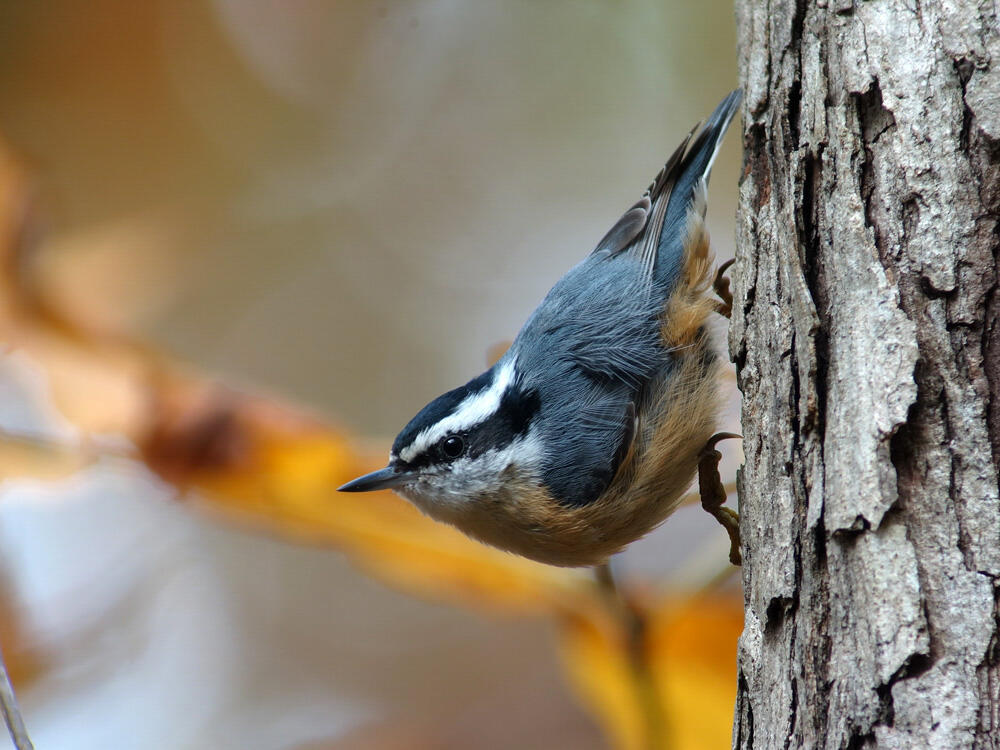
Slightly more rare to see at your feeder than the rest, but still worth mentioning. Red-breasted nuthatches are a bit smaller than white-breasted nuthatches, they have a black cap and eyeline mask, dark grayish-blue back and a cinnamon colored belly. Their tails are rather short and bills are sharp. Red-breasted nuthatches prefer coniferous woods (pines, evergreens) to hardwoods. If you're watching a feeder in or near a mixed forest or evergreen forest, you're likely to see them. Their yank-yank call sounds like a tiny clown horn.
Try attracting the Chickadee Flock to your yard with a suet feeder or black sunflower seeds! Or, take a walk in the woods and see how many members of the flock you can identify!
Want to Learn More?
Audubon's Online Bird Guide - you can look up by species.
Bird Note podcast episode, How Chickadee Flocks Avoid Traffic Jams at your Feeder

